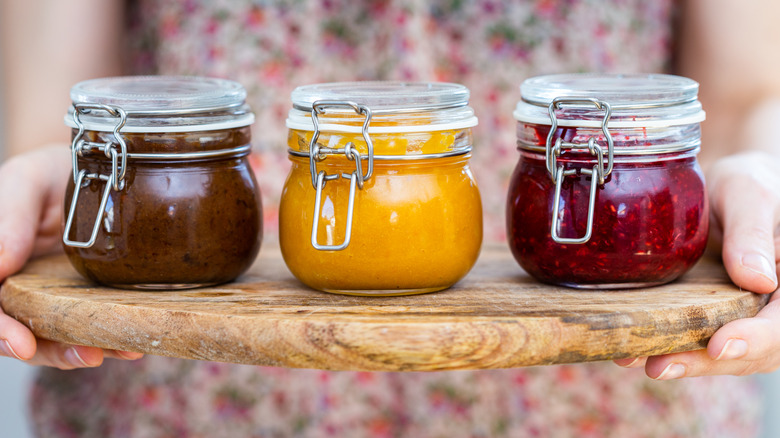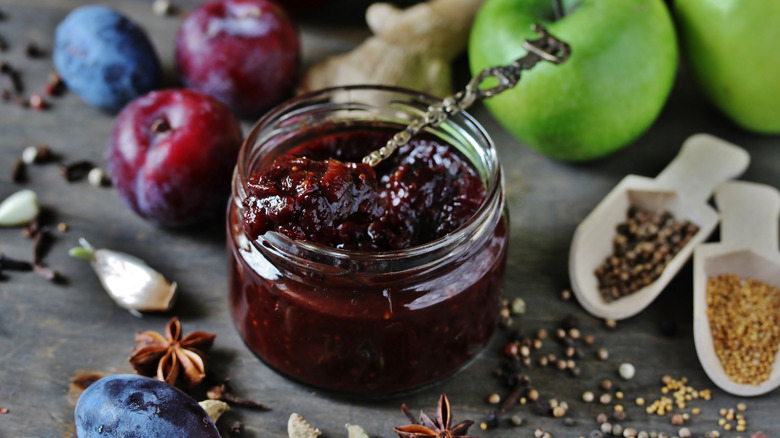The Simple Difference Between Conserves And Jam
Before the advent of the refrigerator, the French preserved their fruit in sugar, calling these preserves a "confiture," according to Douciers Etoiles. But even with the development of food preservation technology, these confitures remained. The proof is in the pudding; we have entire aisles in our grocery stores dedicated to fruit jellies, jams, butters, and conserves. But why are there distinct terms that all seem to represent the exact same thing: a gelatinous, macerated fruit preserved in sugar and acid? Well, there are slight differences between these varieties of fruit spreads.
Interestingly enough, what the French called "confiture" best translates to "preserve" in English, as shown in Merriam-Webster. So what makes a jam different from a preserve? What about a conserve? As the French tended to call anything preserved in sugar a confiture, it seems that the original meaning still holds significance. Serious Eats notes that "preserve" is more of an umbrella term for jams, jellies, and competes, although The Pioneer Woman specifies that preserves usually contain larger pieces of fruit suspended in the spread, hence preserving some of the fruit itself without letting it turn into a homogenous jelly. A dive into the nuances of fruit spread will reveal that a jam is more particular than what we had initially thought.
Conserves can be made of anything
So what of a conserve, which is so similar in meaning to a preserve? Like a preserve, a conserve can be made of anything, from fruits to nuts to vegetables. The distinction between a conserve and a classic jam is the flexibility of the term itself. According to Food & Wine, jam is a much more specific term that describes a mixture of a single fruit, sugar, acid, and sometimes pectin. Anything that adds more to a simple, one-fruit jam falls under the larger "conserve" category.
This means that every jam is a type of conserve, but not every conserve is a jam. If you've ever had a triple-berry jam, that is technically a conserve because it contains more than one fruit. Then, there is also hot pepper jelly, which is more of a pepper conserve because it contains a medley of vegetables rather than one. Some people even add nuts or herbs to their conserves, which can make excellent sweet and savory spreads. While the distinction between a jam and a conserve is rooted in specificity, the difference between a jam and a jelly is more about the cooking technique and finishing texture. But that's a conversation for another time.

